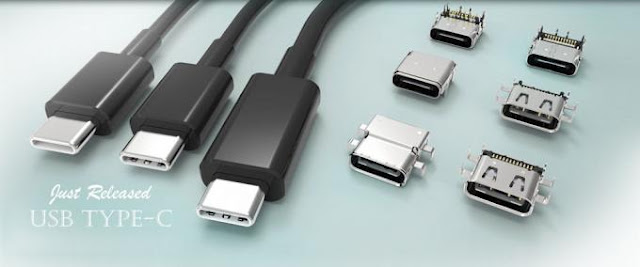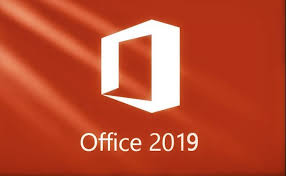USB C: What you need to know and how to survive the inevitable transition
USB C: What you need to know and how to survive the inevitable transition
The Apple MacBook with its unique Type-C USB port has put this format back in the limelight. Here are the two things to know about this connection, this decision will be democratized and replace the USB as we know it and how to make the transition smoothly.
An ultraportable computer with extreme choices. Ultra-thin and lightweight, it has only one port: a USB Type-C. If this is the first laptop to integrate, it is not the first device that does. The Nokia N1 Android tablet already has a USB Type-C port. Sandisk unveiled its dual-format USB key a week before Apple's announcement at the MWC 2015. Other manufacturers, such as LaCie, are taking advantage of the announcement of the MacBook to introduce their first USB Type-product C. One thing is certain, and this even before the choice of Apple, the USB C is promised a bright future and will be democratized on computers, tablets, smartphones, accessories. USB C will supplant the USB we know. It must be said that it has several assets.
USB-type-c-USB-3.1
The most important thing about this new norm is its universality. We can actually do everything through USB Type-C. Clearly, just about every connector you know can be supplanted by the USB-C. Image, sound, data everything goes smoothly, including the electrical power needed to charge the device. The standard is also scalable and can adapt to future protocols.
The USB C with its new connector format is reversible (like the Apple Lightning plug). USB is no longer meaningful, which greatly simplifies connections. Countless times the cable, the key, the USB memory card reader ... is in the wrong position, forcing us to repeat the same gesture again and again: the turnaround.
The USB Type-C offers a size quite close to the micro USB with dimensions of 8.4 x 2.6 mm. Without presenting a gain at this level, it remains a small footprint and easily integrates into all types of products. All universes should move to more or less long term: telecommunication, computer, music, photo, video, automotive, IoT (Internet of Things) ... A standardization that should allow the sharing of chargers, cables and (hopefully the) decrease their numbers in homes.
The USB Type-C relies on USB 3.1 (although some products like the SanDisk key remain on USB 3.0). A standard that has the advantage of offering a higher transfer speed with a wider bandwidth. The theoretical speed of the USB Type-C in USB 3.1 is at 10 gigabits per second (Gbps). That's double what USB 3.0 (5 Gbps) offers. The USB Type-C USB 3.1 is also more powerful with a voltage intensity that can rise to 20 volts and 5 amps (5 V and 1.8 A for its predecessor). This gives the USB Type-C USB 3.1 a potential of 100 Watts! In concrete terms, this will allow you to charge larger devices faster. This should also allow you to do without external power for a number of external devices and accessories.
As expected Apple has removed all the connectivity classic on its new MacBook Pro "Touch Bar" in favor of 4 ports Thunderbolt 3 which are nothing but USB-Type C "to do everything" as can be seen in the picture below. It's more than on the MacBook, but that does not solve the underlying problem: USB-C devices are still very rare.
If you find the connector on many smartphones, most of the time we have Type-C on one side and Type-A on the other. So, if you do not want to replace all your cables it will have to go through the box "Hub". The good news is that since the arrival of MacBook, many manufacturers have embarked on the market for USB Hub C, scenting the coming market thanks to the impulse given, no, imposed by Apple.
To recover all that you have lost compared to the previous MacBook Pro Retina, you will need at least two USB 3 ports, an SD card reader and finally an HDMI jack.
At Aukey you will find this hub with 4 USB and an HDMI output. Be careful however, it will use a second port to recharge the machine. No problem for new MacBook Pro, but do not recommend if you have only
Google Translate for Business:Translator ToolkitWebsite Translator
If you do not need all of its outputs, you can focus on the essentials with just USB plug. It will be a cheaper solution and you will be spoiled for choice. We selected this model with 4 USB.
Note that you can also simply opt for a Usb-C to USB adapter. Apple offers an "official" ... charged 25 euros. Opt instead for this pack of two adapters less than 10 euros. Slightly cheaper. Here you are ready to transition smoothly.
The Apple MacBook with its unique Type-C USB port has put this format back in the limelight. Here are the two things to know about this connection, this decision will be democratized and replace the USB as we know it and how to make the transition smoothly.
An ultraportable computer with extreme choices. Ultra-thin and lightweight, it has only one port: a USB Type-C. If this is the first laptop to integrate, it is not the first device that does. The Nokia N1 Android tablet already has a USB Type-C port. Sandisk unveiled its dual-format USB key a week before Apple's announcement at the MWC 2015. Other manufacturers, such as LaCie, are taking advantage of the announcement of the MacBook to introduce their first USB Type-product C. One thing is certain, and this even before the choice of Apple, the USB C is promised a bright future and will be democratized on computers, tablets, smartphones, accessories. USB C will supplant the USB we know. It must be said that it has several assets.
USB-type-c-USB-3.1
- USB C is universal
The most important thing about this new norm is its universality. We can actually do everything through USB Type-C. Clearly, just about every connector you know can be supplanted by the USB-C. Image, sound, data everything goes smoothly, including the electrical power needed to charge the device. The standard is also scalable and can adapt to future protocols.
- USB C no longer makes sense
The USB C with its new connector format is reversible (like the Apple Lightning plug). USB is no longer meaningful, which greatly simplifies connections. Countless times the cable, the key, the USB memory card reader ... is in the wrong position, forcing us to repeat the same gesture again and again: the turnaround.
- Size
The USB Type-C offers a size quite close to the micro USB with dimensions of 8.4 x 2.6 mm. Without presenting a gain at this level, it remains a small footprint and easily integrates into all types of products. All universes should move to more or less long term: telecommunication, computer, music, photo, video, automotive, IoT (Internet of Things) ... A standardization that should allow the sharing of chargers, cables and (hopefully the) decrease their numbers in homes.
- Faster and more powerful
The USB Type-C relies on USB 3.1 (although some products like the SanDisk key remain on USB 3.0). A standard that has the advantage of offering a higher transfer speed with a wider bandwidth. The theoretical speed of the USB Type-C in USB 3.1 is at 10 gigabits per second (Gbps). That's double what USB 3.0 (5 Gbps) offers. The USB Type-C USB 3.1 is also more powerful with a voltage intensity that can rise to 20 volts and 5 amps (5 V and 1.8 A for its predecessor). This gives the USB Type-C USB 3.1 a potential of 100 Watts! In concrete terms, this will allow you to charge larger devices faster. This should also allow you to do without external power for a number of external devices and accessories.
- Make a smooth transition
As expected Apple has removed all the connectivity classic on its new MacBook Pro "Touch Bar" in favor of 4 ports Thunderbolt 3 which are nothing but USB-Type C "to do everything" as can be seen in the picture below. It's more than on the MacBook, but that does not solve the underlying problem: USB-C devices are still very rare.
If you find the connector on many smartphones, most of the time we have Type-C on one side and Type-A on the other. So, if you do not want to replace all your cables it will have to go through the box "Hub". The good news is that since the arrival of MacBook, many manufacturers have embarked on the market for USB Hub C, scenting the coming market thanks to the impulse given, no, imposed by Apple.
To recover all that you have lost compared to the previous MacBook Pro Retina, you will need at least two USB 3 ports, an SD card reader and finally an HDMI jack.
At Aukey you will find this hub with 4 USB and an HDMI output. Be careful however, it will use a second port to recharge the machine. No problem for new MacBook Pro, but do not recommend if you have only
Google Translate for Business:Translator ToolkitWebsite Translator
If you do not need all of its outputs, you can focus on the essentials with just USB plug. It will be a cheaper solution and you will be spoiled for choice. We selected this model with 4 USB.
Note that you can also simply opt for a Usb-C to USB adapter. Apple offers an "official" ... charged 25 euros. Opt instead for this pack of two adapters less than 10 euros. Slightly cheaper. Here you are ready to transition smoothly.







No comments: